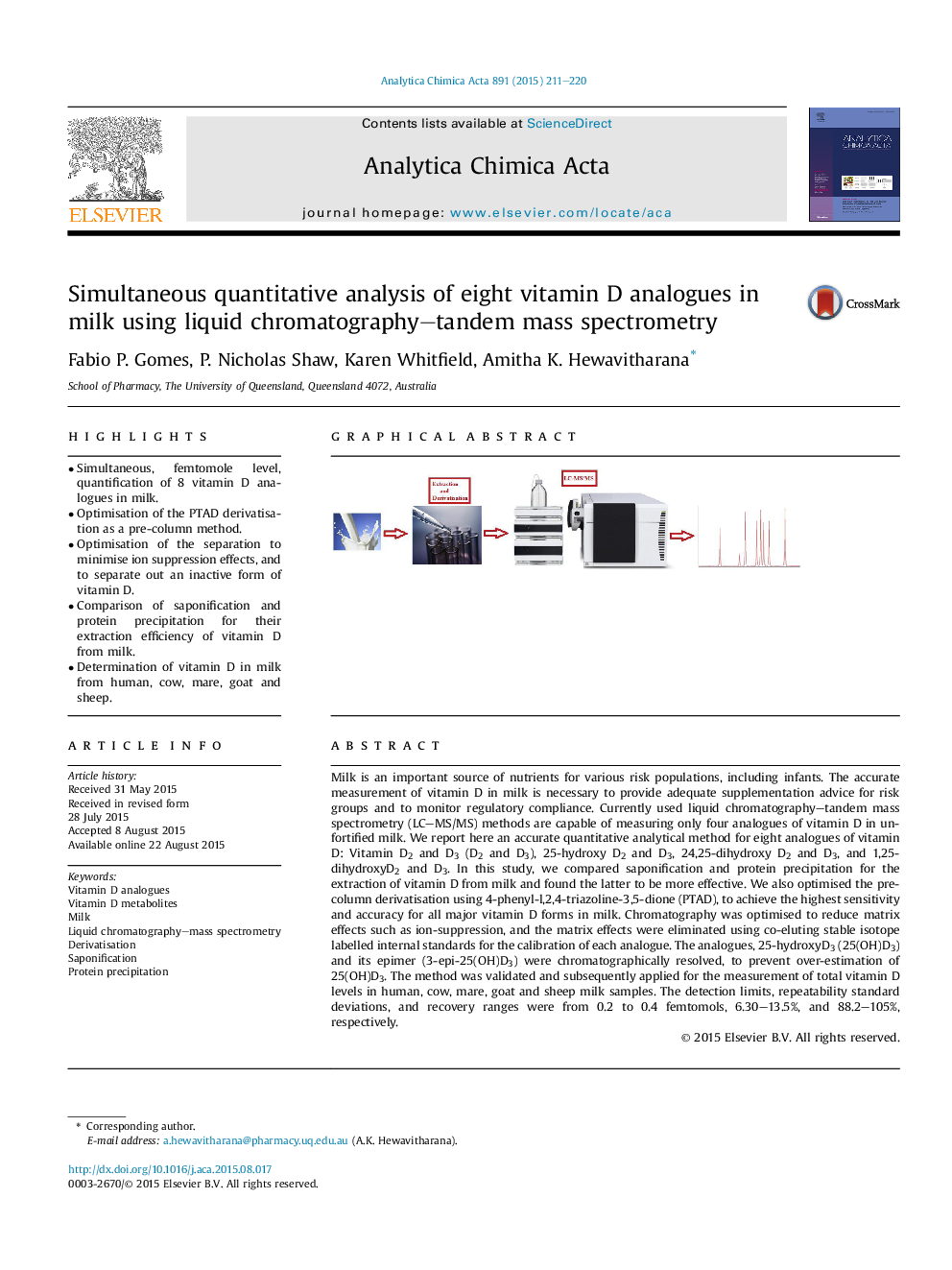| Article ID | Journal | Published Year | Pages | File Type |
|---|---|---|---|---|
| 1163400 | Analytica Chimica Acta | 2015 | 10 Pages |
•Simultaneous, femtomole level, quantification of 8 vitamin D analogues in milk.•Optimisation of the PTAD derivatisation as a pre-column method.•Optimisation of the separation to minimise ion suppression effects, and to separate out an inactive form of vitamin D.•Comparison of saponification and protein precipitation for their extraction efficiency of vitamin D from milk.•Determination of vitamin D in milk from human, cow, mare, goat and sheep.
Milk is an important source of nutrients for various risk populations, including infants. The accurate measurement of vitamin D in milk is necessary to provide adequate supplementation advice for risk groups and to monitor regulatory compliance. Currently used liquid chromatography–tandem mass spectrometry (LC–MS/MS) methods are capable of measuring only four analogues of vitamin D in unfortified milk. We report here an accurate quantitative analytical method for eight analogues of vitamin D: Vitamin D2 and D3 (D2 and D3), 25-hydroxy D2 and D3, 24,25-dihydroxy D2 and D3, and 1,25-dihydroxyD2 and D3. In this study, we compared saponification and protein precipitation for the extraction of vitamin D from milk and found the latter to be more effective. We also optimised the pre-column derivatisation using 4-phenyl-l,2,4-triazoline-3,5-dione (PTAD), to achieve the highest sensitivity and accuracy for all major vitamin D forms in milk. Chromatography was optimised to reduce matrix effects such as ion-suppression, and the matrix effects were eliminated using co-eluting stable isotope labelled internal standards for the calibration of each analogue. The analogues, 25-hydroxyD3 (25(OH)D3) and its epimer (3-epi-25(OH)D3) were chromatographically resolved, to prevent over-estimation of 25(OH)D3. The method was validated and subsequently applied for the measurement of total vitamin D levels in human, cow, mare, goat and sheep milk samples. The detection limits, repeatability standard deviations, and recovery ranges were from 0.2 to 0.4 femtomols, 6.30–13.5%, and 88.2–105%, respectively.
Graphical abstractFigure optionsDownload full-size imageDownload as PowerPoint slide
